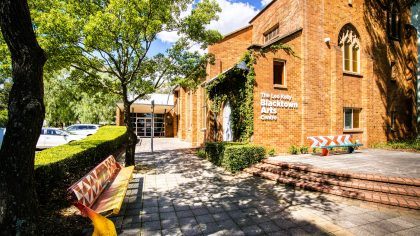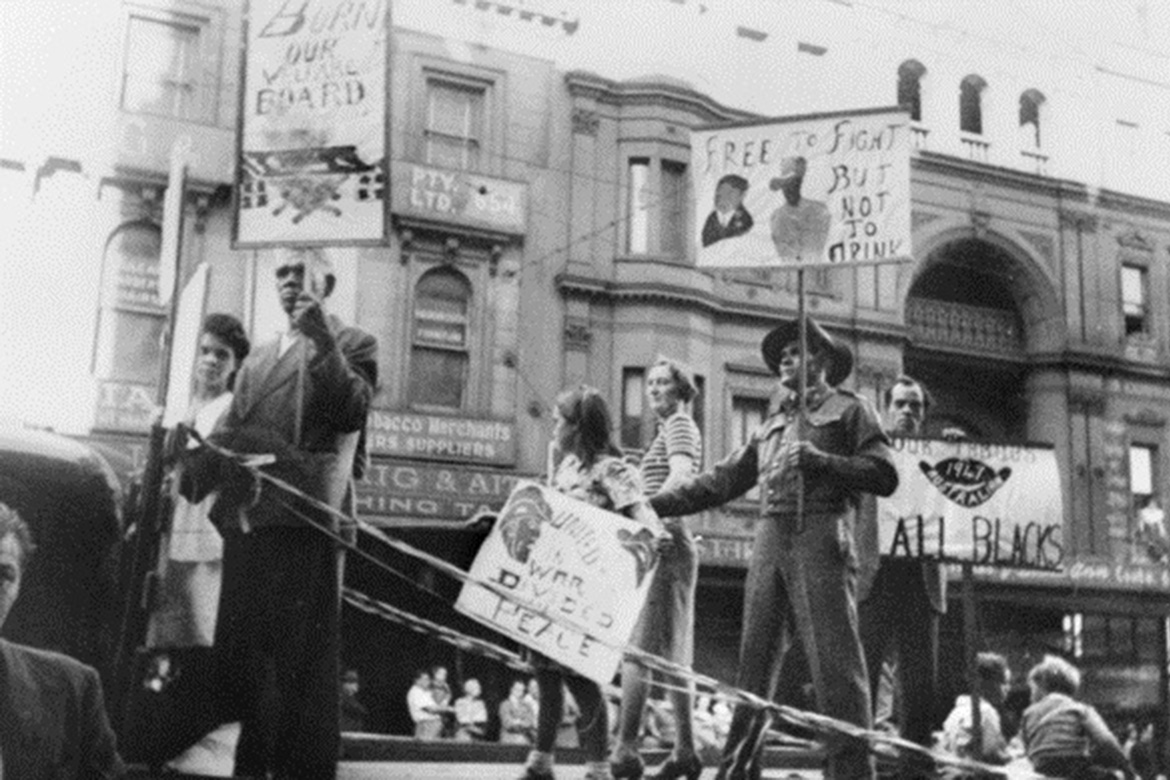
The Leo Kelly Blacktown Arts Centre
An innovative multi-arts hub in the heart of Blacktown City.
Bayadyinyang budyari Dharug yiyura Dharug Ngurra.
Bayady’u budyari Dharug Warunggadgu baranyiin barribugu.
Bayady’u budyari wagulgu yiyuragu Ngurra bimalgu Blacktown City. Flannel flowers dyurali bulbuwul.
Yanmannyang mudayi Dharug Ngurrawa. Walama ngyini budbud dali Dharug Ngurra Dharug yiyura baranyiin barribugu.
We acknowledge the Traditional Custodians of this Land, the Dharug people, and their continued connection to Country.
We pay our respects to Elders from yesterday to tomorrow.
We extend that respect to all Aboriginal and Torres Strait Islander Peoples of Blacktown City where the flannel flowers still grow proud and strong.
We will walk softly on this land and open our hearts to Country as the Dharug people have for tens of thousands of years.
Credit to: Dharug woman Rhiannon Wright, daughter of Leanne ‘Mulgo’ Watson Redpath and granddaughter of Aunty Edna Watson

NAIDOC (National Aboriginal and Islander Day Observance Committee) Week is a time of remembrance and celebration for Aboriginal and Torres Strait Islander peoples that is held every year in early July.
Each NAIDOC Week has its own theme showcasing an element important to Aboriginal lives and culture, which often gives focus for Aboriginal activities throughout the year. This year’s NAIDOC theme is ‘Our Languages Matter’.
NAIDOC Week has its origins in early Aboriginal activism. The Aborigines’ Day of Mourning on 26 January 26 1938 (the 150th Anniversary of the landing of the First Fleet), was an action which saw Aboriginal people in Sydney march in ‘silent protest from the Town Hall to the Australian Hall in Elizabeth Street’.
After the march, the Aborigines’ Progressive Association (of which this writer’s father – Bert Groves – was President in later years) held a meeting titled “Australian Aborigines Conference: Sesqui-centenary: Day of Mourning and Protest to be held in The Australian Hall, Sydney on Wednesday, 26th January, 1938”.
Jack Patten, the first president of the Aborigines’ Progressive Association, chaired the meeting. Some of the other people attending the conference were William Ferguson, Doug Nicholls, William Cooper, Jack Kinchela, Margaret Tucker, Pearl Gibbs, Bert Groves, and Jack Johnson.
It is from this meeting that a National Day of Mourning was established, and continued to be observed by Aboriginal people in Sydney, Melbourne and Adelaide for many years.
In 1957, a National Aboriginal Day Observance Committee (NADOC) was established, and decided to move the date from January to July.
‘Islander’ was added to the name in 1991 to include Torres Strait Islander people. This new name has become the title for the whole week, not just the day. Each year, a theme is chosen to reflect the important issues and events for NAIDOC Week.
Event Information
To celebrate NAIDOC Week, Blacktown City Council presents the 2017 NAIDOC Family Day:
Tuesday, 4 July 2017
11 am – 4 pm
Blacktown Showground Precinct
For more information, including the full line-up of performers and activities, visit our Facebook event page or download the event flyer.
More information
Download the NAIDOC History Timeline.
References
NAIDOC NAIDOC History
Australian Institute of Aboriginal and Torres Strait Islander Studies Day of Mourning and Protest Aborigines Conference – 75th Anniversary
The writer’s own historical family knowledge